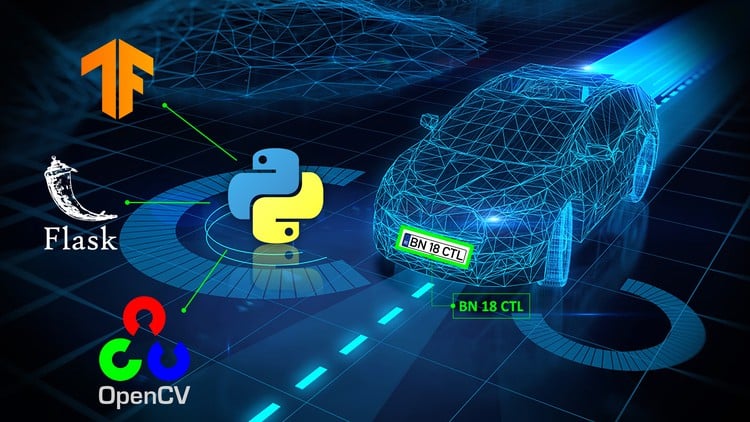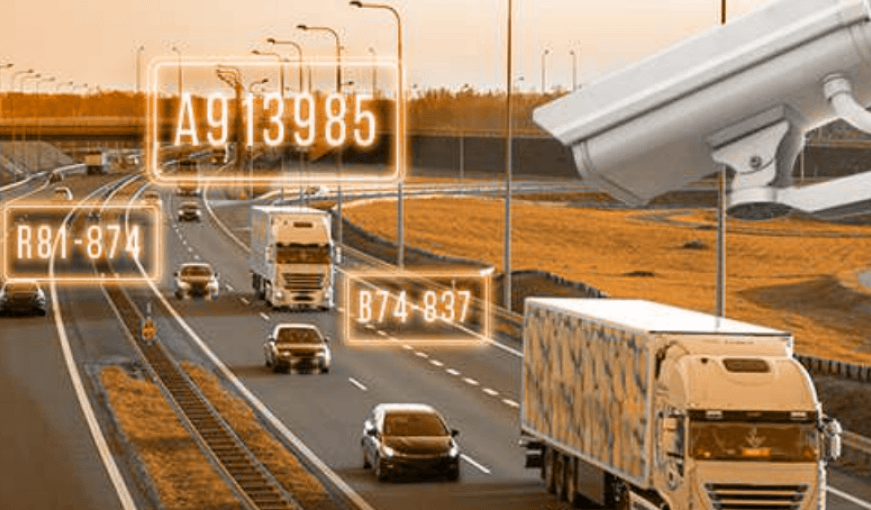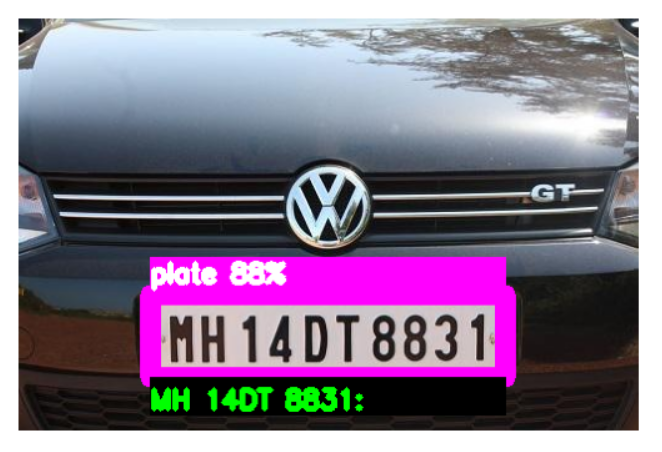The Role of OpenCV, YOLO, and TensorFlow in Modern ANPR Development
Automatic Number Plate Recognition (ANPR), also known as License Plate Recognition (LPR), is transforming how cities manage traffic, how businesses monitor vehicles, and how governments ensure public safety. But behind the seamless user experience of an ANPR system lies a complex blend of cutting-edge technologies—especially computer vision and deep learning.
In this blog post, we’ll explore how three of the most powerful and popular tools—OpenCV, YOLO (You Only Look Once), and TensorFlow—play an important roles in the modern ANPR development systems.
What Is ANPR?
ANPR is a video analytics technology that captures and reads vehicle license plates using CCTV or IP cameras. The goal is to extract the license plate number and convert it into a digital string that can be logged, searched, analyzed, or used to trigger actions like gate access or fines.
To accomplish this, an ANPR pipeline generally consists of:
- Image acquisition from a camera.
- Vehicle detection and license plate localization.
- License plate segmentation.
- Character recognition (OCR).
- Data logging and action (e.g., access, alerts, or billing).
This pipeline relies heavily on OpenCV for image processing, YOLO for object detection, and TensorFlow for OCR using deep learning.

OpenCV: The Backbone of ANPR Image Processing
OpenCV (Open Source Computer Vision Library) is a powerful open-source toolkit designed for real-time image and video processing. In ANPR development, OpenCV serves as the foundation for the early and intermediate stages of the recognition process.
Key Roles of OpenCV in ANPR:
1. Preprocessing Video Frames
Before a license plate can be detected, raw video frames must be preprocessed to improve accuracy. This includes:
- Grayscale conversion – Reducing computational load.
- Histogram equalization – Improving contrast.
- Noise reduction – Using Gaussian blur or median filtering.
- Edge detection – Using Sobel or Canny filters.
pythonCopyEditgray = cv2.cvtColor(frame, cv2.COLOR_BGR2GRAY)
blurred = cv2.GaussianBlur(gray, (5, 5), 0)
edges = cv2.Canny(blurred, 100, 200)
2. Detecting Regions of Interest (ROI)
Once a vehicle enters the frame, OpenCV is used to isolate regions where license plates are likely located. Techniques such as contour detection, morphological operations, and bounding box filtering help extract plate candidates.
3. Image Segmentation
After localizing the plate, OpenCV assists in segmenting the characters from the plate, preparing them for OCR.
4. Perspective Correction
Real-world camera angles can skew plate images. OpenCV is used to perform affine or perspective transformations to straighten and normalize the plate for better recognition.
YOLO: Real-Time License Plate Detection
YOLO (You Only Look Once) is a real-time object detection algorithm. Unlike traditional object detectors that scan the image in patches, YOLO looks at the entire image once and predicts bounding boxes and class probabilities directly.
In ANPR systems, YOLO is used primarily for vehicle and license plate detection.
Why YOLO Is Ideal for ANPR:
1. Real-Time Processing
YOLO is fast—processing video frames in real-time (>30 FPS on a good GPU). This is critical for applications like toll booths, traffic enforcement, or drive-through monitoring.
2. High Accuracy
With YOLOv5 and YOLOv8, accuracy has improved dramatically. These models can detect plates in cluttered scenes, under poor lighting, or with skewed angles.
3. Ease of Training
Custom YOLO models can be trained on license plate datasets with just a few hundred images using tools like LabelImg and Ultralytics’ training pipeline.
bashCopyEdityolo task=detect mode=train model=yolov5s.pt data=lp.yaml epochs=100 imgsz=640
4. Vehicle Classification + Plate Detection
Advanced ANPR systems often use YOLO to detect both the vehicle and its license plate in a multi-class model. This allows applications to combine license data with vehicle type and color.

TensorFlow: Powering Deep Learning & OCR
TensorFlow is an open-source machine learning library developed by Google. It provides a robust ecosystem to build, train, and deploy deep neural networks, and it’s extensively used in the OCR stage of ANPR.
How TensorFlow Is Used in ANPR:
1. OCR (Optical Character Recognition)
Once YOLO detects the plate and OpenCV segments the characters, TensorFlow-based models are used to recognize characters.
Popular architectures include:
- CNN + RNN + CTC Loss
- CRNN (Convolutional Recurrent Neural Network)
- Transformers for sequence-to-sequence recognition
pythonCopyEditmodel = tf.keras.models.load_model('anpr_ocr_model.h5')
predictions = model.predict(preprocessed_plate_img)
2. Language & Country-Specific OCR Models
License plates vary by language, script, and layout. TensorFlow enables training custom OCR models to recognize Arabic, Bengali, Cyrillic, or even hybrid fonts used in the UK or India.
3. Integration with TFLite for Edge Deployment
TensorFlow Lite allows you to deploy your OCR models on low-powered edge devices like Raspberry Pi, Jetson Nano, or mobile phones.
4. AutoML & Transfer Learning
With TensorFlow’s AutoML tools and transfer learning APIs, developers can quickly adapt pre-trained models for new license plate styles without building models from scratch.
Sample ANPR Workflow with OpenCV, YOLO & TensorFlow
Here’s how the components work together in a real-world pipeline:
- Capture Frame from IP camera (RTSP) using OpenCV.
- Apply Preprocessing using OpenCV (resize, grayscale, denoise).
- Use YOLOv5/YOLOv8 to detect the license plate.
- Crop Plate Region using bounding box coordinates.
- Segment Characters using OpenCV’s contour-based methods.
- Recognize Characters using a TensorFlow OCR model.
- Output Plate Number, log to database, trigger gate/alert/API.
This modular design makes the system scalable and customizable for different hardware and applications.
Real-World Development Challenges
Despite the power of these tools, developers face several real-world challenges in ANPR:
1. Low-Quality Footage
- Dust, blur, motion, rain, and sun glare can affect OCR.
- Solution: Use advanced image preprocessing and infrared-enabled night vision cameras.
2. Skewed and Tilted Plates
- Vehicles often enter at odd angles.
- Solution: Perspective transformation via OpenCV, and training YOLO on skewed plates.
3. Multi-Language Plates
- India, for example, has 22 official languages.
- Solution: Use language-specific OCR models in TensorFlow.
4. Edge vs. Cloud
- Cloud offers processing power, but edge is required for latency.
- Solution: TensorFlow Lite for OCR and YOLOv5 on Jetson/Coral for detection.

Customization & Scalability
Modern ANPR systems built with OpenCV, YOLO, and TensorFlow are highly customizable:
- Support custom license plate formats
- Integrate with existing CMS/ITMS/VMS systems
- Deploy across geographies (India, USA, UAE, UK, Bangladesh, etc.)
- Enable real-time alerts, API access, and data analytics dashboards
These systems are also modular, allowing for future enhancements like:
- Facial recognition of the driver
- Vehicle color and type classification
- Speed and direction tracking
- Integration with e-challan or ERP systems
Future of ANPR with OpenCV, YOLO & TensorFlow
The future of ANPR development is moving toward intelligent, decentralized systems that can function with minimal hardware while maintaining high accuracy. Here’s what’s next:
- YOLO-NAS and EfficientDet for faster object detection.
- Vision Transformers (ViT) and Diffusion Models for ultra-accurate OCR.
- Synthetic Data Generation using GANs for faster training.
- Federated Learning for improving models without centralizing sensitive data.
- Real-time cloud dashboards with live video analytics.
With the continued evolution of AI and edge computing, OpenCV, YOLO, and TensorFlow will remain central to ANPR innovation.
Final Thoughts
Modern ANPR development is a perfect example of how open-source technologies and deep learning can work together to solve real-world problems. By combining:
- OpenCV for image preprocessing and transformations,
- YOLO for fast, accurate object detection,
- TensorFlow for powerful OCR and custom AI models,
developers can build flexible, scalable, and high-performing ANPR systems that are adaptable to any country’s traffic infrastructure.
As smart cities expand, and traffic automation becomes a necessity, ANPR systems developed with these tools will play a crucial role in improving efficiency, security, and mobility.
Need a Custom ANPR Solution?
If you’re building or deploying an ANPR system for smart cities, traffic management, toll booths, or commercial properties, our expert team at Kotai Electronics can help you implement a high-accuracy, real-time system using OpenCV, YOLO, and TensorFlow tailored for your needs.

